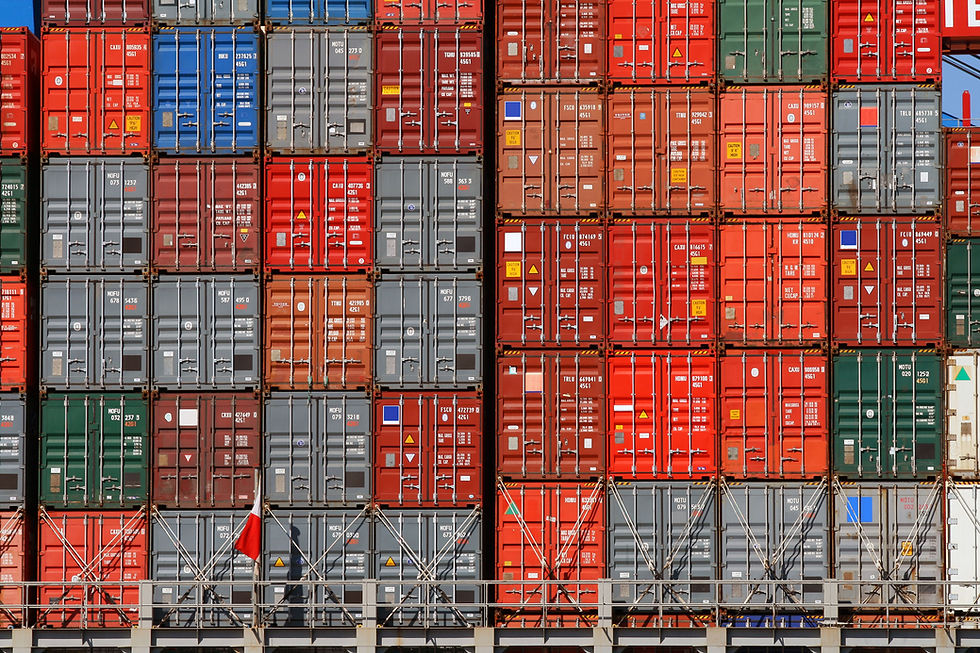November GRIs: What’s Coming & Why It Matters.
- The Cargo Confidential

- Oct 24
- 2 min read
As we head into November, carriers are lining up another round of General Rate Increases (GRIs) on Asia–Australia routes, and this round is more than a routine adjustment.
The China–Australia market has officially tipped into peak-season territory - and not the gentle, seasonal kind. What began as a strong late-October rally has now escalated sharply, with carriers pushing freight rates to levels not seen since early 2024. GRIs announced for early November are not simply opportunistic; they are a structured attempt to reset the rate floor before year-end.

Here’s the low-down as far as current signals are concerned:
Carrier | Quota (per TEU) | Origin(s) | Destination(s) | Commencement Date |
MSC | USD500.00 | North Asia | AU/NZ | 1st Nov 2025 |
MSC | USD200.00 | Southeast Asia | AU/NZ | 1st Nov 2025 |
OOCL | USD500.00 | Northeast Asia | AU | 1st Nov 2025 |
OOCL | USD300.00 | Asia | NZ | 1st Nov 2025 |
ANL | USD300.00 | Northeast Asia | AU | 8th Nov 2025 |
Carriers are now implementing GRIs of roughly USD 500 per TEU in early November, not as a one-off, but to re-establish a higher base rate while demand remains white-hot.
Capacity is so tight that MSC - one of the most cautious in Q3 - is now among the most aggressive.
Demand is booming. Overflow is real. And this time, the supplier (carriers) are dictating the tempo.
When October rate sheets were confirmed, the market looked firm but manageable. That expectation evaporated within days.
Yes, there are ad-hoc sailings being injected - mostly TS Lines small to mid-size loaders - but these are capacity relief, not capacity reset.
Vessel | Service | Capacity | Window | Arrivals |
TS TACOMA | CA3 | 2,750 TEU | Late Oct / Early Nov | 19–25 Nov (AU East Coast) |
TS KWANGYANG | CA3 | 2,750 TEU | 7–11 Nov loadings | 21–27 Nov arrivals |
TS CHENNAI | CA3 | 1,400 TEU | 8–14 Nov loadings | 27 Nov–2 Dec arrivals |
These are helpful — but nowhere near enough to offset the volume avalanche.
The “Butterfly Effect” Trigger: U.S. Tariff Shock
One of the most powerful accelerants wasn’t domestic to Australia at all... it came from Washington.
Former U.S. President Trump’s threat of a 100% tariff on Chinese goods from 1 November created a pre-deadline export stampede out of China. Factories that export to the U.S. moved aggressively to clear cargo before the tariff became effective - flooding the Transpacific market with last-minute pulls.
Result:
Transpacific ships were suddenly overbooked again
Excess tonnage that might have been redirected to Australia stayed put
China–Australia got the demand spike without the benefit of influx capacity
The U.S. sneezed... and the AU lane caught the cold.
What This Means For Australian Importers
Rates remain elevated into mid-November
Space priority is king — late booking = rollover risk
Any unlocked volumes are exposed to GRI uplift
Southbound is now carrier-controlled pricing, not market-led
Even if the second half of November cools slightly, this first-half squeeze is already fully priced in.
Want a full lane-by-lane breakdown (Australia-Asia, Asia-US, Intra-Asia) and carrier-specific GRI advice? That’s in this month’s Logistics Report for subscribers.






Comments